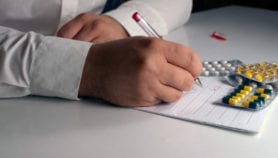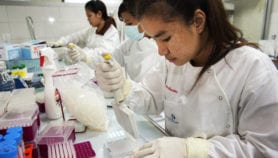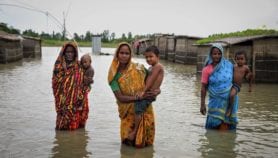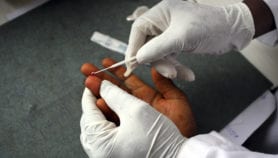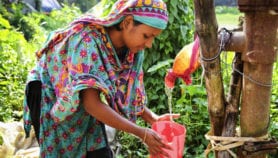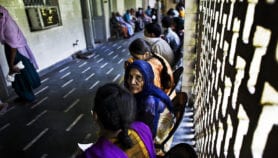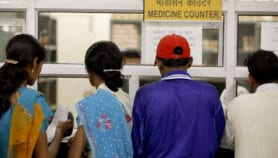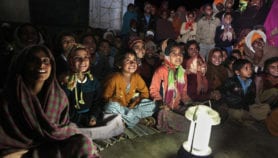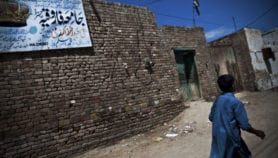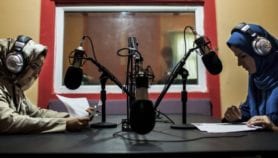By: Fatima Arkin
Send to a friend
The details you provide on this page will not be used to send unsolicited email, and will not be sold to a 3rd party. See privacy policy.
[MANILA] Representatives from the 193 UN member states that adopted the Sustainable Development Goals (SDGs) at the UN General Assembly on 25 September will now need to come up with a plan to localise the goals on national and regional levels.
The 17 goals and 169 targets that make up the SDGs are outlined in the 2030 Agenda for Sustainable Development. The SDGs build upon the Millennium Development Goals (MDGs) and are expected to direct the international development agenda over the next 15 years.
In anticipation of that transition, the Economic and Social Commission for Asia and the Pacific (ESCAP) held four rounds of intergovernmental deliberations over the past 12 months. Two rounds were on sustainable development and the other two on financing for development.
“Our member states in Asia and the Pacific must seize this generational opportunity provided to us to end poverty everywhere, in all of its dimensions, and this requires a holistic, rigorous and integrated approach to development,” Shamshad Akhtar, UN undersecretary general and executive secretary of ESCAP, tells SciDev.Net.
Unfinished business
South-East Asian countries were early achievers of several MDGs, but significant gaps remain. According to the 2014/2015 Asia-Pacific Regional MDGs Report, South-East Asia is expected to meet 14 of the 21 targets and has been an early achiever in key areas, including access to safe drinking water and extreme poverty reduction (those living on US$1.25/day). The report names South-East Asia as the “most successful subregion” but the truth is more complicated.
“One of the lessons of the MDGs is that while we’ve seen progress in particular in Asia and the Pacific on poverty reduction, the aggregate really masks a lot of the inequalities at the subnational level,” Michaela Prokop, a programme advisor on the SDGs at the Asia-Pacific regional centre of the UN Development Programme (UNDP), tells SciDev.Net. She notes that inequality has become a particularly big issue in the region since the financial crisis and the Asia-Pacific is one of the few regions in the world where inequality is rising.
“Our member states in Asia and the Pacific must seize this generational opportunity provided to us to end poverty everywhere, in all of its dimensions.”
By UN undersecretary general Shamshad Akhtar
Meanwhile, the small island developing states (SIDS) in the Pacific are expected to meet eight of the targets that could be tracked (data on extreme poverty were not available.) According to Akhtar, maternal mortality has dropped 51 per cent in the region in the last two decades and “progress” has been made in protecting marine areas, preventing the loss of biodiversity and maintaining food security. But decreasing the number of underweight children and increasing the number of proficient health workers who help with labour and birth remain key problems.
Experts in the region hope that the SDGs will fill these deficits in the MDGs while simultaneously advancing a more ambitious path.
“A range of goals and targets have to be delivered by municipalities, whose public financial resource management needs strengthening in developing countries,” says Akhtar. ESCAP estimates that achieving the SDGs in Asia and the Pacific alone will cost about US$2.5 trillion.
“Moreover, we need to recognise that private sector financing has to be adequately harnessed by strengthening enabling environments and developing equity and debt markets, which remain underdeveloped in a number of developing countries.”
The Asia-Pacific Forum on Sustainable Development plans to take a leading role in the regional follow-up to New York, says Akhtar. Early next year, its member states will agree on a local road map for sustainable development and decide on key areas of action that will reflect existing subregional frameworks, such as the 2014 SAMOA pathway and the ASEAN Community Vision 2025. The latter is a document that embodies the people-centred spirit of the SDGs and will be endorsed by regional leaders at the ASEAN Summit in November.
According to Akhtar, ESCAP will support the implementation of a regional road map by facilitating research and analysis on sustainable development, engaging in capacity building and sharing best practices, particularly on data, statistics and sustainable development strategies in the region.
Science, technology and innovation
Akhtar points to science, technology and innovation (STI) as one of the key factors that will help South-East Asian and Pacific countries, particularly the least developed ones, tackle the SDGs. Pertinent types of STI include communication technology for early warning systems to deal with the increased frequency of natural disasters due to climate change, innovative farming techniques that increase productivity and enhance food security, and dynamic business sectors to foster the development of technologies that can improve living standards and quality of life.
“The innovation gaps in Asia and the Pacific are large,” says Akhtar. “But country disparities can be addressed if we promote a coordinated regional approach to STI advancement through the sharing of resources, knowledge and best practices by tapping ESCAP’s platform to promote South-South and triangular cooperation.”
Some of the countries in the region that may require assistance on addressing technology gaps include Malaysia, Thailand and Vietnam. Akhtar says these countries need to invest more in their people — their most valuable resource — and take the next step in producing home-grown innovations that address each country’s unique needs.
Other economies in the region that rank near the bottom of the Global Innovation Index, such as Cambodia, Fiji and Myanmar, require policies that focus on accessing and absorbing technological and innovative solutions that are already available. Akhtar recommends that these countries engage in global value chains (GVCs) for technology.
She references research that will be published in the forthcoming Asia Pacific Trade and Investment Review, which suggests that partaking in GVCs can potentially promote technological upgrade both directly (through foreign direct investment or technology licenses) and indirectly (through imported inputs or capital and worker training for developing economies).
This article has been produced by SciDev.Net's South-East Asia & Pacific desk.
References
1) 2014/2015 Asia-Pacific MDG Report: http://www.asia-pacific.undp.org/content/dam/rbap/docs/Research%20&%20Publications/mdg/RBAP-RMDG-Report-2014-2015.pdf
2) Link to SDGs and its targets: http://www.un.org/sustainabledevelopment/sustainable-development-goals/



